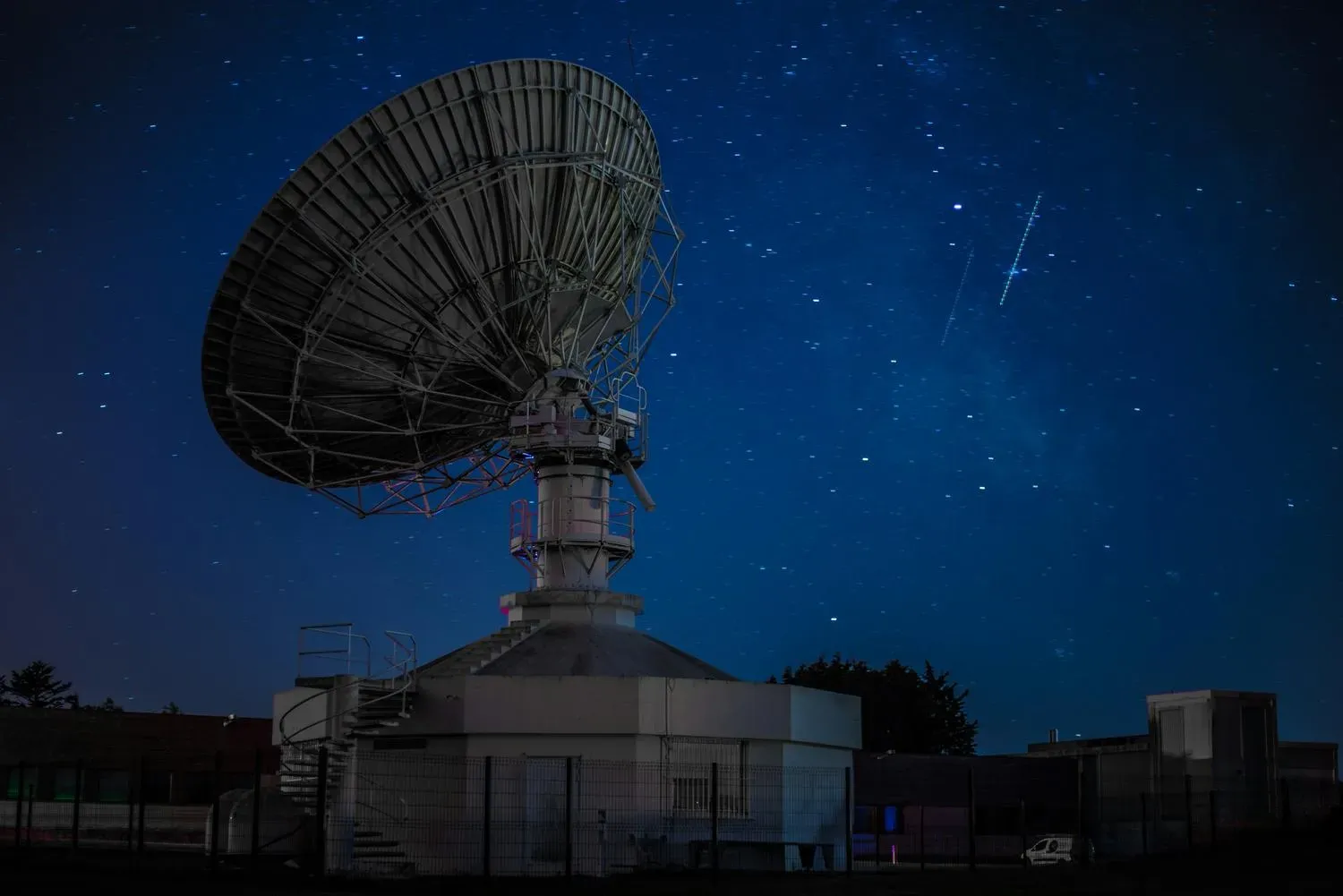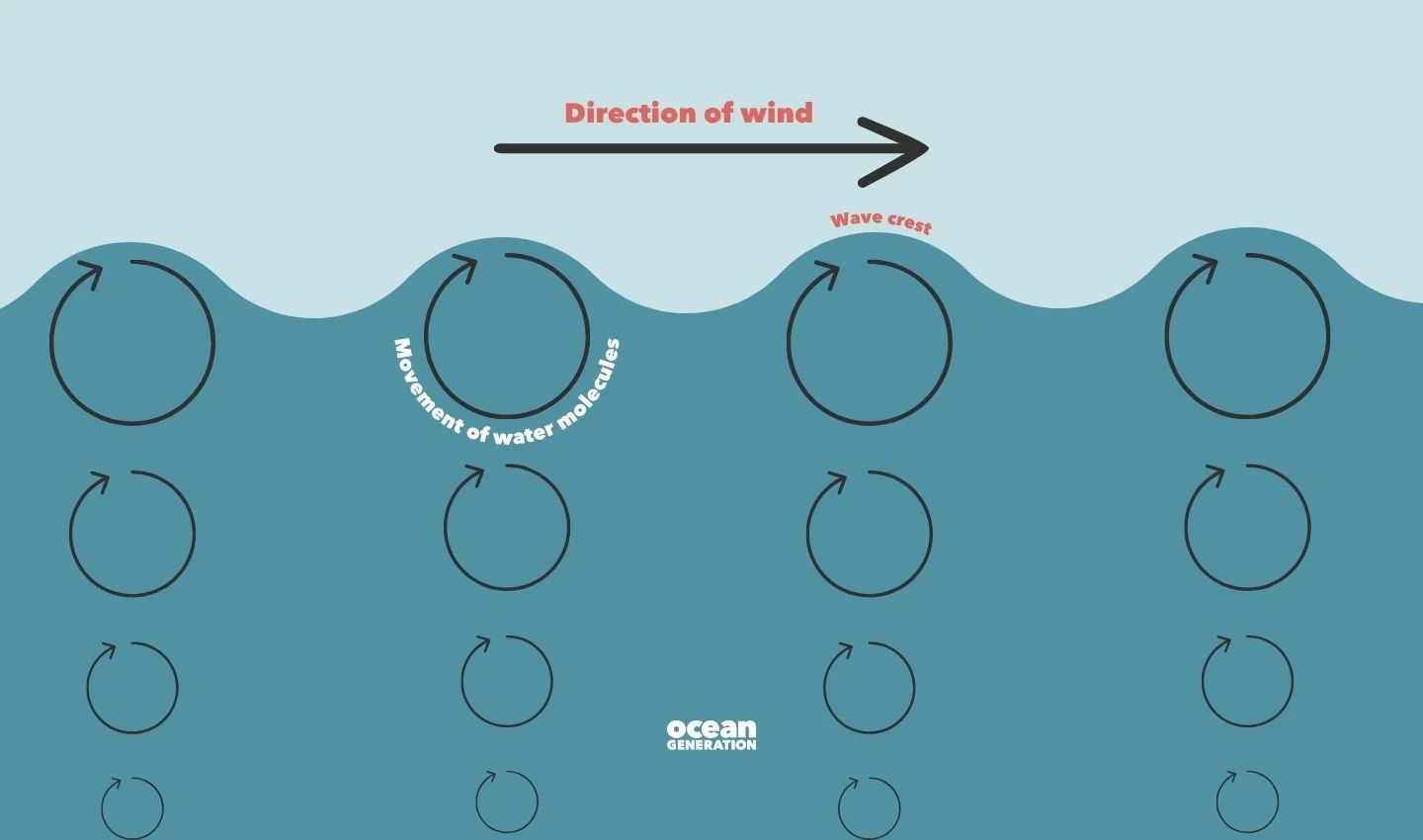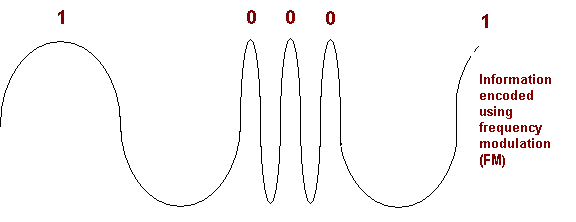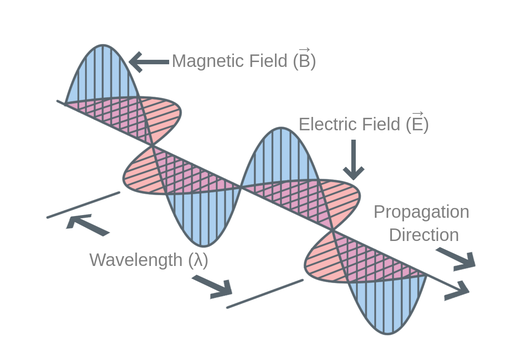Reading time: 15min
From AM to 5G: A Journey Through the World of Radio Frequencies
Let's explore the magic behind the waves that connect us all.
Waves Everwhere
Even though we cannot see them, waves are all around us. They are present in our daily lives, from the sound of music to the light that illuminates our surroundings. Waves are a fundamental aspect of nature and play a crucial role in various fields, including physics, engineering, and communication.
Waves can be classified into two main categories: mechanical waves and electromagnetic waves. Mechanical waves require a medium (solid, liquid, or gas) to propagate, while electromagnetic waves do not require a medium and can travel through a vacuum (space devoid of matter).
A wave by definition is a disturbance that travels through space and matter, transferring energy from one point to another without the transfer of matter(mass).
What do you mean?
Let's think of waves in the ocean, which is a form of mechanical wave. A common misconception is that the waves push water from one place to another. However, this is not the case. The water does not move from one place to another, but rather it moves up and down in a circular motion.
If it did, our duck friend would move horizontally, but as we can see there is only vertical movement. In this case, the wave is formed by a human but in nature the cause of waves is the wind.
The wind power pushes the water molecules, causing them to move up and down, and carry some of the energy released in the process. This is a mechanical wave because it requires a medium (water) to propagate.
Anything that moves by the law of physics, have kinetic energy. And that energy can be calculated with below formula:

Where m stands for mass, and the v for velocity.
The energy from the wind is transferred to the water molecules, causing them to move in a circular motion.
Once they have enough energy from the wind, these wave crests spread out and begin their journey across the open Ocean as “swells”. These swells can travel uninterrupted for thousands of miles, until they reach the shore and meet their dramatic end.1
As the wave approaches shallower water, the circular orbits of the water molecules in the lower part of the water column are disrupted by the seafloor and get slowed down by friction.
The water molecules closer to the surface are less effected by friction, so the energy continues to move through them at its original speed.
Where does the wind get this energy anyway?
The answer is Sun, as it is the source of most of the energy found on earth.
The sun generates energy in the form of heat and light. The sun is a giant sphere of extremely hot gas that made up of mostly Hydrogen. Hydrogen is an element that is colorless, odorless, and highly flammable gas where its atoms have only one proton, and one electron.
In normal conditions, if hydrogen atoms collide, they just bounce off each other. But at extremely high temperatures, and pressures (like at the sun) they fuse to create a helium atom with two protons, releasing tons of energy during the process.
This phenomena is called nuclear fusion.
 | 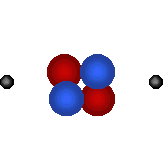 |
| Hydrogen | Helium |
In the core of the Sun the temperature and pressure are so high that nuclear fusion occurs. This means that the atomic nuclei start sticking together. Four Hydrogen nuclei (composed of one proton each) are glued together to make one Helium nucleus which has two protons and two neutrons. When this happens two protons are changed into two neutrons and huge amounts of energy is released. The name Helium comes from the Greek work "helios" which means Sun.1
The sun then emits this released energy in the form of light and heat, which we call, solar energy.
The high temperature provides them with enough energy to overcome their mutual electrical repulsion. Once the nuclei come within a very close range of each other, the attractive nuclear force between them will outweigh the electrical repulsion and allow them to fuse. For this to happen, the nuclei must be confined within a small space to increase the chances of collision. In the sun, the extreme pressure produced by its immense gravity creates the conditions for fusion.1
Heat and light then comes down to earth in the form of photon waves.
The Sun, the Wind, and the Ocean Dance

The photons that travel millions of kilometers from the Sun carry energy in the form of light and heat. When they reach Earth, they don't warm every part of the surface equally. Land and water absorb heat at different rates. Land heats up and cools down much faster than water.
This uneven heating creates temperature differences between air above land and air above the ocean. Warm air over the land rises, and cooler air from over the water rushes in to replace it. This movement of air is what we feel as wind.
And here's where it gets interesting—wind is a mechanical wave of air molecules being pushed by the energy of the sun.
All photons are the same basic particle, but they differ in frequency and energy.
The frequency (or wavelength) of a photon determines what kind of electromagnetic wave it is:
Infrared Photons, carrying energy we perceive as heat. They make molecules vibrate, which increases temperature.
Visible Light Photons, stimulating our eyes and are what we see as color.
Ultraviolet Photons, having higher energy and ability to cause sunburns or damaged cells.
Microwave, radio, gamma – all just photons at different frequencies.
Here is a simple anology
Think of photons like musical notes—each frequency (or pitch) has a different effect. Infrared notes warm things up. Visible notes make you see color. Ultraviolet notes can burn. But it's all the same instrument: the electromagnetic wave, carried by photons.
Unlike the mechanical waves, like the ocean waves needing water to transfer energy, the eloctromagnetic waves, like photons, do not need any medium, and travel freely. That is why the energy from the sun can travel through empty space and reach our world.
Since electromagnetic waves don't need matter to travel through, they move at the speed of light.
The Language of Waves: Frequency, Amplitude, and Energy
Let's discuss the properties of waves. Waves are characterized by their wavelength, frequency, and amplitude. These properties determine how waves behave and interact with the world around them.

Wavelength: The distance over where the shape of the weave starts repeating.
Frequency: Number of oscillations (waves) passed through a certain point in a second. It is measured in Hertz.
Amplitude: The height of the wave from the center line to the peak. It determines the energy of the wave. Amplitude affects the intensity of the energy but not the type of wave.
Energy of a wave: For electromagnetic waves, energy is tied directly to the frequency and its formula is: E = hf, where E is energy, h is Planck's constant (6.626 x 10^-34 J·s), and f is frequency.
So, the higher the frequency, the more energy a photon carries. That's why ultraviolet light can burn your skin, but radio waves can't.
For mechanical waves, energy is tied to the amplitude and the formula is: E = A^2, where E is energy and A is amplitude.
Encoding Information: How We Talk Through Waves
When we send data using waves, we don't physically throw text or sound through the air. Instead, we modulate the wave—changing its properties in precise ways to represent 1s and 0s, voices, music, video, or commands.
Radio waves are the longest-wavelength type of electromagnetic wave. Because of their lower energy, they're perfect for sending signals over long distances without much interference. But what makes them truly useful is the way we can modulate and detect them.
Amplitude Modulation (AM): We vary the height (amplitude) of the wave. A higher or lower amplitude at different times encodes different parts of the signal.
Frequency Modulation (FM): We vary the speed of oscillation (frequency) of the wave. The faster or slower the wave oscillates, the more it changes the encoded data.
These modulated waves carry digital codes, patterns, or pulses that can represent simple commands like "open the door" or "play music," or even streams of complex data like audio or Wi-Fi packets.
How Receivers Understand the Message
A receiver is designed to listen on a specific frequency—like tuning your ear to a particular pitch. If a wave comes in on the right frequency, the receiver pays attention.
Then, the receiver demodulates the signal—it reverses the modulation to extract the original encoded information. Once it has the message (which could be a binary code like 01001101), it compares it to its pre-programmed list of known signals.
If there's a match—say, the code matches the one tied to your RFID badge or key fob—the receiver sends a command to perform an action:
- Unlock a door
- Start an engine
- Record a product entry
- Authorize access
If it doesn't match, it simply ignores the signal or denies the request.
This process happens in milliseconds, invisibly, all thanks to how we've learned to shape and interpret radio waves.
If you are interested in learning more about how data written with waves, you may visit this article for detailed information.
So when you're scrolling through your feed or streaming a song, you're riding the wave—literally.
Why Do Waves Travel? The Electric and Magnetic Dance
Energy doesn't just travel in straight lines—it moves in waves. Why? Because of the nature of electromagnetic waves, like light and radio.
When we talk about light, we're referring to a continuous back-and-forth exchange between electric and magnetic fields. Here's how it works:
An electric field is a region where electric forces are felt, whereas a magnetic field is a region where magnetic forces are felt.
According to the laws of electromagnetism (Maxwell's equations), a changing electric field creates a magnetic field, and a changing magnetic field creates an electric field. This constant interaction—like an ongoing conversation between two forces—creates a self-perpetuating loop that propagates through space.
This dynamic exchange forms a wave that travels outward from the source carrying energy at the speed of light.
In simpler terms: Electromagnetic waves travel because electric fields and magnetic fields can't help but keep creating each other—a perfect dance that carries energy across vast distances, from the Sun to Earth, or from your phone's antenna to the nearest Wi-Fi router.
Waves are the universe's energy delivery system—without them, light wouldn't shine, heat wouldn't spread, and no message could ever be sent.
RFID: Magic That Opens Doors
Imagine walking up to a locked door. You don't touch a keypad, swipe a card, or even turn a key. You just wave a badge, and the door clicks open.
That's the power of RFID—a technology that uses radio waves to identify, authenticate, and even trigger actions without physical contact.
What is RFID, Really?
RFID stands for Radio-Frequency Identification. It's a system made up of two main parts:
- An RFID tag (or chip), which stores a unique ID or piece of information.
- An RFID reader, which sends out a radio wave and listens for a response.
When you bring your tag near the reader, wonders happen.
And here's how that works.
The RFID reader constantly emits a radio wave at a specific frequency—usually in the low MHz or GHz range. Think of it like shouting, "Hey! Who's out there?"
The RFID tag, which doesn't even need a battery in most systems (we'll get to that), has a small antenna. When it enters the reader's field, it picks up the wave and uses that energy to power its internal circuit.
Once powered, the tag sends a signal back—usually a unique ID stored in memory. This return signal is modulated to ride the radio wave back to the reader, often by reflecting or adjusting the wave in specific patterns (a method called backscatter).
The reader receives the signal, demodulates it to extract the tag's data, and checks it against its internal list. If it finds a match—like an authorized employee badge—it triggers an action: unlock the door, log an entry, or even sound an alarm.
Passive vs Active Tags
Most everyday RFID systems (like office doors or library books) use passive tags, which don't have their own power source. They rely entirely on energy from the reader.
Active RFID tags contain tiny batteries. These can send signals farther and store more data—ideal for logistics, shipping containers, or asset tracking.
RFID in Real Life
You've probably used RFID without realizing it:
- Access control badges at work
- Key fobs for cars or garages
- Contactless payment cards
- Inventory systems in warehouses
- Even your passport has an RFID chip
Each use relies on the same core principle: a silent handshake between a reader and a tag, carried on the back of a radio wave.
From Waves to Action
At its core, RFID takes the invisible energy of a radio wave and turns it into a real-world action. It's how we use waves not just to communicate, but to interact—making things happen without touch, wires, or delay.
This technology, rooted in the same physics as light and sound, brings abstract wave science into everyday life—seamlessly, efficiently, and often without us even noticing.
Key Takeaways
- Waves are everywhere, from sound to light.
- Mechanical waves need a medium; electromagnetic waves do not.
- Waves transfer energy without transferring matter.
- Understanding waves is essential for physics and communication.
- Modulation is how we encode information onto waves, and demodulation is how we decode it—key concepts in wireless communication like AM, FM, and RFID.
- RFID uses radio waves for contactless identification, authentication, and triggering actions like unlocking doors or processing payments.
